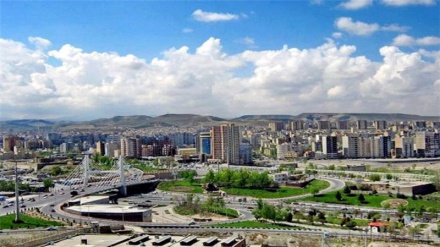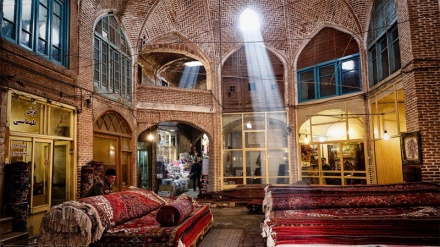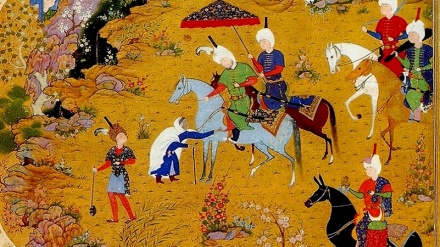Tabriz, 2018 (4)
Dear listeners, welcome to this week's episode of the series Tabriz, 2018. Currently, there are 1950 villages in East Azarbaijan Province. Many of these villages maintain scenic landscapes, and magnificent historical sites. Today, we introduce three of these villages as exemplary tourist attraction sites.
Majarshin Village is situated sixty kilometers away from the city of Tabriz in East Azarbaijan Province. It is a historical village, with intact, ever-green nature, and scenic highlands. Walnut and willow trees are planted in this region. The related villagers are usually engaged in farming, horticulture, animal husbandry, and carpet-weaving. Meanwhile, animal husbandry is mainly common in this village, which is home to a number of meadows; resulting in the ample production of dairy products.
The first settlements in this village were homes made at the heart of rocks, which had many shelves for maintenance and storage of food. Also, there are a number of holes, dug within the rocks for observation of the surroundings.
The locals of this village grapple with numerous problems and heavy costs in construction of their homes due to the high altitude of their village. The majority of homes are constructed at the heart of rocks. Meanwhile, in the past, a number of homes were also constructed with mud-dried bricks, stone-made walls, and wooden roofs. The construction materials for these houses are usually provided for, from the near surroundings. The soil needed for constructions in this village, were brought from a nearby village. This soil was used mainly due to its high adhesiveness. The villagers made sun-dried-mud bricks with wooden frames. These activities were mainly carried out close to the Iranian New Year holidays.
Liqvan Valley is located southeast of the city of Tabriz, on the foothills of Sahand Mountain. It is one of the best known tourist attraction sites in the vicinity of city of Tabriz.
Liqvan Village is one of the most populous villages of East Azarbaijan Province. It is home to 8,000 locals. The cheese produced in this village is globally famous. According to the writings of researchers and historians, the history of this village dates back to the pre-Islamic era. Liqvan warm water current, which has emerged due to underground developments, and remains of dormant volcanoes of Sahand Mountain, is branched into a number of rivers. On the banks of this warm water current, there are a number of mineral water springs.
Liqvan Valley is one of the touristic sites of this village, and is one of the best known venues for recreational activities, in the environs of the city of Tabriz. This valley is also located east of another popular village. The cavities, caves, stables, chambers, tunnels, and corridors at the heart of mountains, and underneath residential buildings, have been dug by the past generations of the locals in this village. In the past, people used the said venues as hideouts, in the face of looters and bandits. However, currently, some of these venues are used for storage of cheese, and maintenance of sheep. These stone-made caves and corridors are cool in the summer time, and warm in the cold season.
If you seek to visit one of the most attractive villages of Iran, you should pay a visit to Kandovan Village, located 62 kilometers southwest of the city of Tabriz. This is the third rocky village across the world; with 120 families living at the heart of these rocks. The economic mainstays of the villagers are namely agriculture, animal husbandry, and production of handicrafts.
This village has come into existence as the result of volcanic activities of Sahand Mountain and other regional volcanoes throughout thousands of years in one of the best locations of East Azarbaijan Province. Lava resulting from volcanic activities have been accumulated throughout the years.
Contrary to common views, the homes made at the heart of rocks in this village have living rooms, storage rooms, and kitchens, and are even equipped with water pipelines and electricity. The diameter of the walls of these houses is around two meters. Therefore, the interior of these houses is usually warm in the winter and cool in the summer season.
This village also accommodates a mosque, a public bathroom, a school, and a mill. Meanwhile, a number of archeologists believe that the history of this village dates back to the pre-Islamic era, while others opine that the residents of a nearby village initially sought refuge in the plains, opposite to present day Kandovan Village, in 7th Century AH, fleeing Mongol raiders. These people gradually built their homes at the heart of the surrounding rocks.
In the meantime, selection of the city of Tabriz as the Tourism Capital of Islamic countries has raised a golden opportunity for foreign tourists to be familiarized with the tourist attraction sites of this region of Iran.
MR/SS


